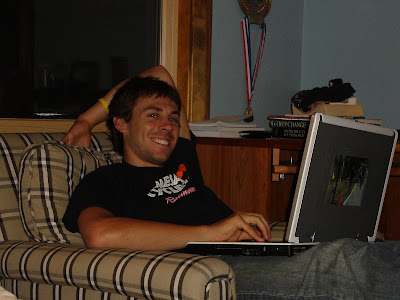SXSW: Reinvent the Wheel: Sketching your own Design Process
Chris Fahey of behaviordesign.com gave a somewhat high-level talk on how to rethink the approach to UX design. This would be good food for thought for any designer or information architect. I underlined the takeaways that Chris outlined on the last slide of his presentation.
Always keep space open the the general waterfall model for reinvention/revision of the concept. Plan to change the plan.
"Design is about solving problems - not about creativity and personal expression." -unattributed
Difficult to go from conservative to radical, much easier to go from radical to conservative.
We're pretty good at making things work, but not quite there when trying to make the applications interesting or fun to use.
Data-Driven Design. Google tests every design change with multivariate tests. Ex: testing 41 shades of blue for the link color on the results page. The decision to do that in-and-of-itself is an idea. http://stopdesign.com/archive/2009/03/20/goodbye-google.html
Data-Inspired Design. Ex: Designers did interviews with end users and created their own deliverables to share with the larger team.
Designers as Researchers. Get designers involved in the research.
There shouldn't only be process or path to the finish. Here's a nice visual of the UX design path http://findability.org/archives/000230.php. The idea of having a deck of cards that contain all the UX design process steps. You can use the cards to create your own process. Stephen Anderson: Mental Notes Cards getmentalnotescards.com
Sketch "Resolution Spectrum" - Gestures/Words to Functional Prototypes. Each project requires it's own process and UX deliverables. Consider the client. Information visualization can be a great tool to distill an idea for a client. Make up your own deliverable.
Periodic table of visualization methods/elements
Don't use templates when beginning a deliverable.
Tricks:
- Blank Canvas
- Exercise: What Is It? - Figure out what the final product is going to be.
- Thumbnail Quantifications: How many pages? etc.
- Least Wanted: What would you hate to see in the final product. What don't you like about your current site.
- User Persona / Flash Mob: a.) gather user research b.) brainstorm all the types, don't assume you have all the personas at the outset. c.) Find patters among these micro personas d.) define smaller/condensed personas to represent the group.
- Personality Characteristics: What's the personality of your product? Factual/statements vs. questioning and suggestive?
- Metaphors: Content, Social, Tools.
- Make up your own words.
- Sketching
- Sketching as prototype
- Listening: The Critique
- "Prototype as if you are right, listen as if you are wrong" -Diego Rodriguez
- Pair designing
Questions:
How to manage budget/brainstorm? Like Agile, have scrums frequently.



No comments:
Post a Comment